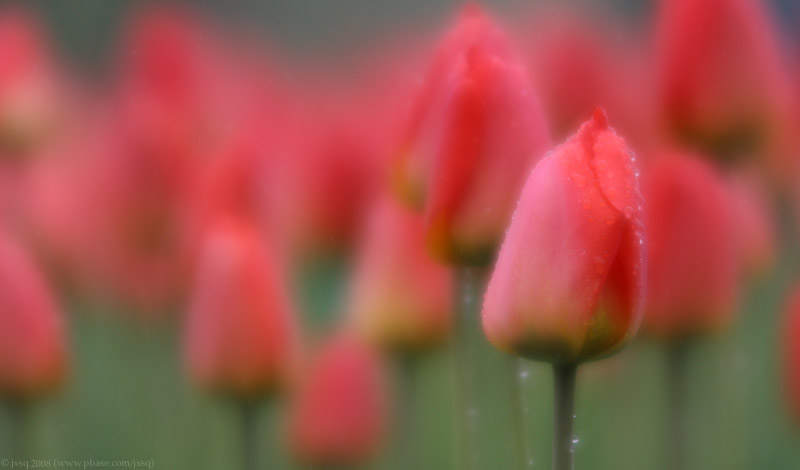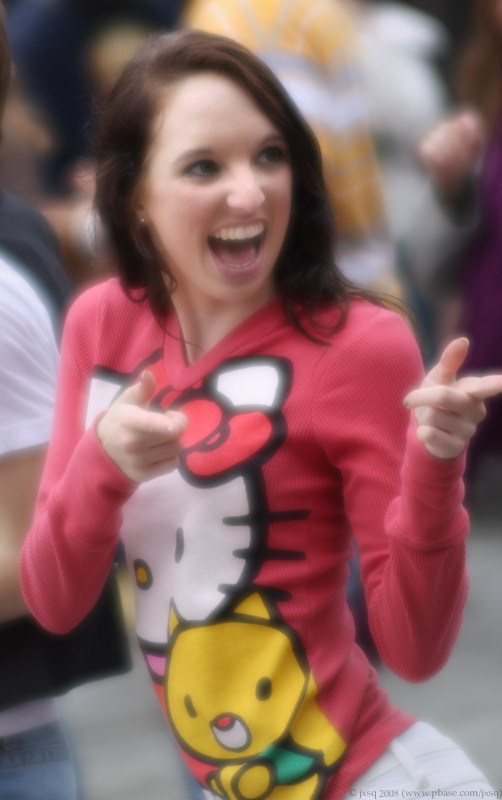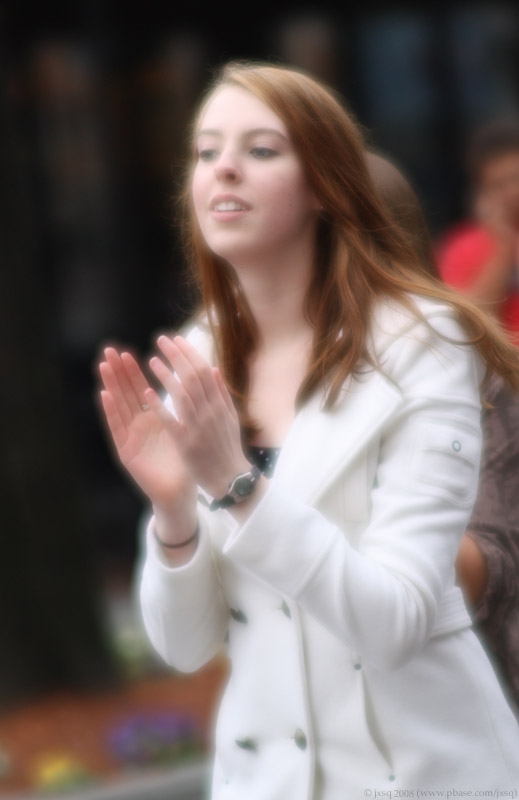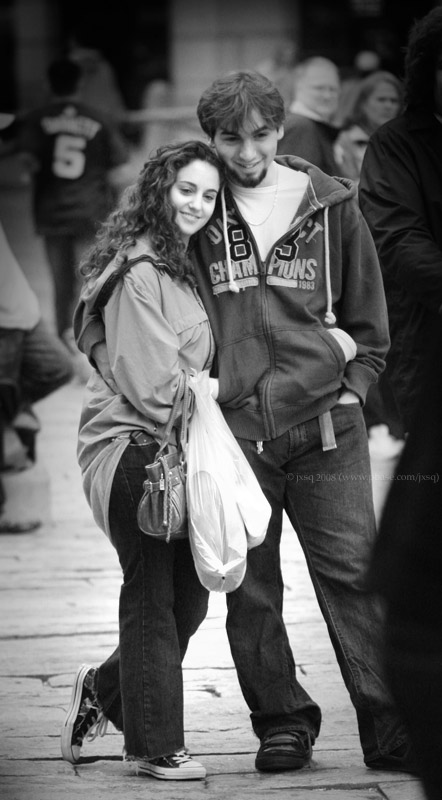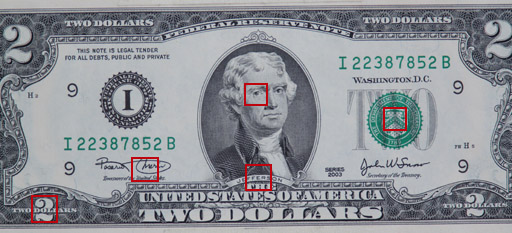Best Lens for Background Blur
When we talk about lens, one stop difference can means a lot, especially money-wise! A EF 85/1.2 L lens costs about $1800, while EF 85/1.8 costs only about $360. The new EF 200/2 L IS costs $5500, while the 200/2.8L costs only $670!
Why?
There are many factors, but one important ones is that the faster lens can blur the background more than the slower ones, and so give more smooth, dreamy backgrounds - something many people are obsessed to and die for it!
Many people get confused between Depth of the Field (DOF) and the ability of blurring background. while these two things are related to each other, there are not the same thing. We are interested in how much the (distant) background get blurred here, while the DOF is to specify the range close the focal plane that is still sharp (enough).
Don't be confused with Bokeh as well! Bokeh is really 'how' a lens render the out-of-focus background, rather than 'how much'!
So what is the ability to blur the background and how can we measure it? David Jacobson in his excellent tutorial have explained this very clearly. Quote from this article,
"The light from a single object point passing through the aperture is converged by the lens into a cone with its tip at the film (if the point is perfectly in focus) or slightly in front of or behind the film (if the object point is somewhat out of focus). In the out of focus case the point is rendered as a circle where the film cuts the converging cone or the diverging cone on the other side of the image point. This circle is called the circle of confusion. The farther the tip of the cone, ie the image point, is away from the film, the larger the circle of confusion."
Clearly the size the circle of confusion is exactly what we want - it measure the ability to blur the background.
Calculating the circle of confusion is not hard. The simplified formula is
C = f^2*(So/Soa-1)/(N*(So-f))
where
f focal length
So object distance
Soa alternate object (background)distance
N f-stop (focal length divided by diameter of entrance pupil)
(Please refer David's tutorial if you want to dig into this little more)
When we compare the background blur among different lens, it is better to maintain same framing by move camera close/away to the subject. This is to say that we maintain the same magnification factor M.
M = f/(So-f)
Rewrite the formula above, we have
C = f*(So/Soa-1)*M/N = (So/Soa-1) * f*M/N
Note that C is always positive, so we should have applied a absolute function on top of the formula, C = abs(C), omitted here for clarity.
For background at infinite distance, this formula can be further simplified, to
C = f*M/N
This is a very nice formula and it is well known. It states that for given magnification, the ability to blur background is proportional to lens' focal length divide by its maximum f-stop!
But, in reality, we are more interested in separate our main object from the background nearby, not the the one in the infinite distance. So we should use this formula instead,
C = (So/Soa-1) * f*M/N
Let's see some example first, let's assume that we want to do a full-body shots, and usually this translate into magnification 1/30 for FF 135 bodies. Let's use some of the popular portrait lens first, like 50/1.4 85/1.8, 100/2, 135/2 and 200/2.8.
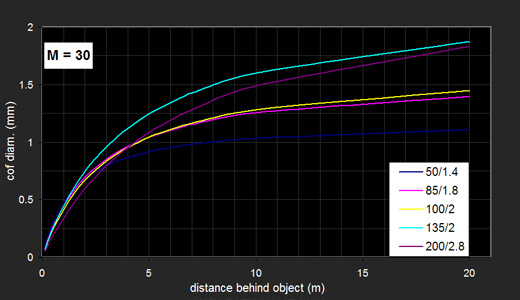
As you can see from this graph, among these lens used, 135L offer the best ability to blur the backgrounds, 200/2.8 second and gradually close the gap while distances increase. 85/1.8 and 100/2 is very close to each other, and 50/1.4 is the weakest in this group. For example, the 135L can blur the background at 3 meters behind as much as 4 meters as other lens did, like 85/1.8, 100/2 and 200/2.8, or even 7 meters for 50/1.4.
Of course, when one is obsessed with something, he will not stop at the popular ones only, rather, he will keep searching for the best! So let's see some of the best portrait lens can do here! These are 50/1.2, 85/1.2, 135/2, 200/1.8 and 300/2.8!!
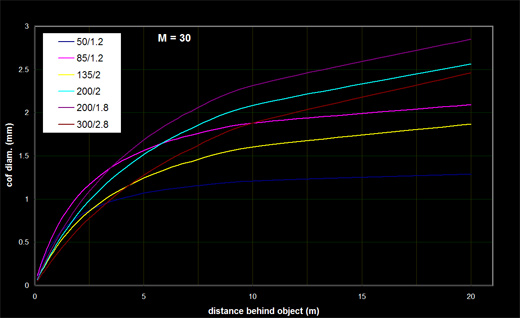
What can we learn here?
1. The legendary 200/1.8 is unapproachable!
2. For background within 3.5 meters, 85/1.2 is the best!
3. The new 200/2 lens is quite a bit worse than 200/1.8!
4. The great 300/2.8 can't compete with 200/1.8 in terms of background blur ability!
5. 300/2.8 beats 85/1.2 only when background is far behind (> 10m)
6. 50/1.2 can do well for background that is very close to main subject.
But if we are interested in the maximum separation between our main subject and the background surrounded it, let's draw a chart with background moer closer than last one.
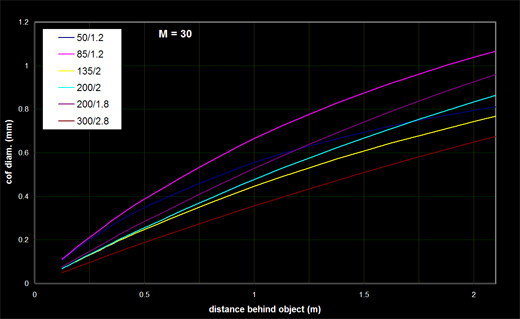
For background this close to the main subject, 85/1.2L is the best, while 50/1.2 e the second. The great 300/2.8 turn out to be the worst performer here!
Remember above results was from full body shots (M=30). Let's see what happen if we do head and shoulder shots instead. Let's assume M=10 this time.
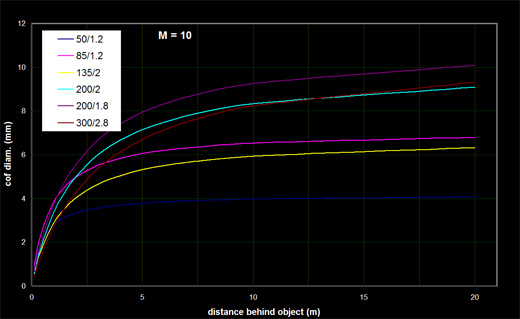
For anything within one meters, all lens are very close to each other. 85/1.2 is still be best until this point. Then 200/1.8 take the lead and maintain it. 300/2.8 beats 85/1.2 for background at three meters and more, and beats 200/2 for background started at about 13 meters.
So what is the conclusion?
Well, there is no one clear winner here. If you want to have absolute the best, you'd better to get both 85/1.2L and 200/1.8! If I have to pick one winner from these two, i'd say it has to be 200/1.8. The magic generated from this lens can't be underestimated. On the other hand, the ability to throw out background at close distance offered by 85/1.2 is unprecedented, this combined with its f1.2 aperture, make it to be the top choice for low light, in-door portraiture!
